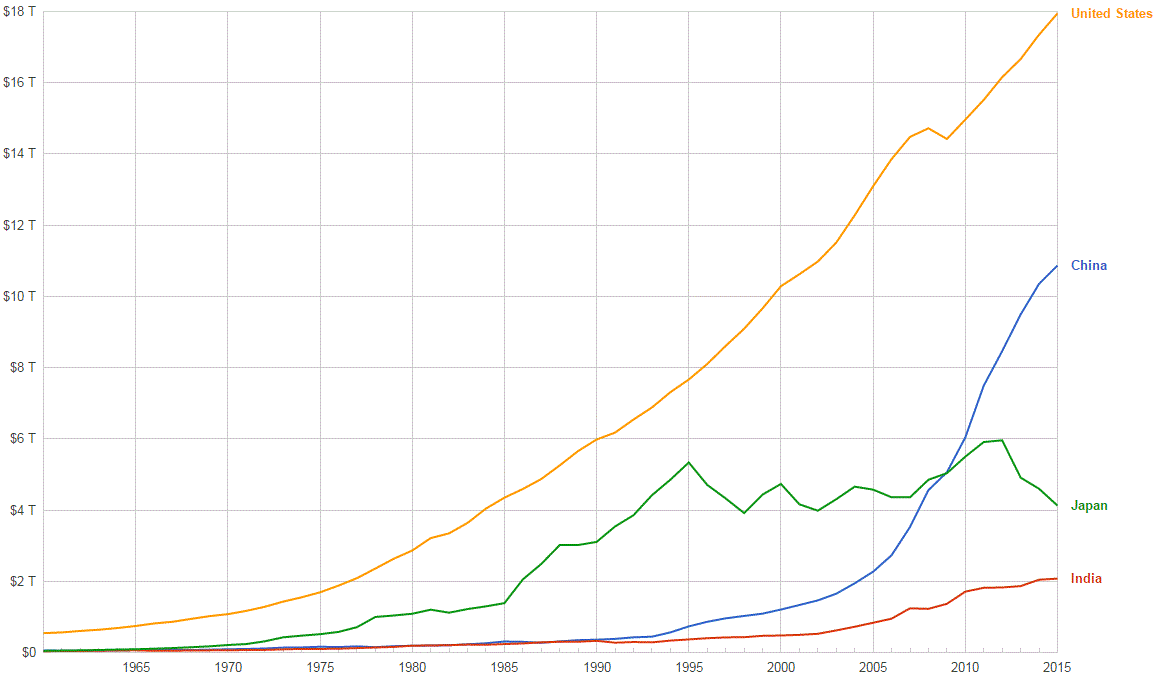Depressions begat revolutions. Now it ain’t so simple as that, but there is a big enough correlation here that every time there is a economic downturn, a nation’s leaders should be looking over their shoulder in concern. If they are a democratic government, it probably means they will now have time to write their memoirs. If they are a dictatorship, they could end up dangling from a meat-hook.
The seminal quantitative work on this subject was two separate studies done in the 1960s by Ted Gurr and the couple Ivo and Rosilind Feierabend. Ted Gurr’s work was summarized in his book Why Men Revolt, while the Feierhabend’s never issued out a book (which is a shame as their work was as significant). There has not been much of significance done since then (which I think is fairly bizarre actually… it is not like revolutions are a dead subject). We have blogged about this before.
So Variable 3 is “How is the economy of China doing?.” As long as the China economy is growing and thriving over the next 20 years, then this only increases the danger to Taiwan. On the other hand, there are lots of reasons to doubt that their economy will continue to thrive over the next 20 years. If the economy is not growing, then this fourth variable comes into play: Is there a problem with internal turmoil and unrest in China? This affects the odds that China will decide the invade Taiwan in five ways:
- The reduced economic growth probably reduces their “defense” budget.
- If there is unrest or political turmoil, it probably distracts the government to worry about internal issues, vice invading their neighbors (although it some cases, it can actually do the reverse).
- It may result in a leadership change:
- This leadership could be even more internally absorbed.
- This leadership could be even more nationalistic.
- This government could be unstable.
- It may result in a change of the form of government:
- Communism collapses.
- It becomes a democracy
- It becomes a dictatorship.
- The new government could be unstable
- Central government may collapse entirely.
- Communism is reinforced (sort of another cultural revolution)
- Communism is de-stabilized, but returns back in control.
- Communism collapses.
- It may result in no government at all (more on this later).
So, what are the odds that China will have a economic slow-down in the next 20 years? Is it 25%, is it 50%, is there no chance at all?
If there is an economic slowdown, what is the chance of political turmoil, and then what is the extent, nature and virulence of this political turmoil? Is it a bunch children of “princelings” that can be run over with tanks, or is something more broadly based.
The problem with revolutions, is that once they start, they gets pretty hard to predict where they are going to go. For example, when the Shah of Iran abdicated in 1979, much his vocal opposition came from the left, often college students. The country ended up being taken over by Ayatollahs. The Russian revolution started in 1917 with the moderately liberal Cadet Party and Alexander Kerensky running the country in a somewhat democratic manner and ended up with Lenin, Trotsky and Stalin in charge. The Russian revolution of 1991 ended up with Boris Yeltsin in charge of a developing democracy and ended up with Vladimir Putin in charge. The Arab Spring of 2010-2012 resulted in demonstrations and revolts in 17 or so different countries. In four of those countries the governments were overthrown (Tunisia, Libya, Egypt and Yemen). Only one ended up with a democratic government in its aftermath.
And then there is always the possibility that China could end up with no central controlling government at all. This is not all that far-fetched. China has spent almost of much of its history broken up into smaller states as it has spend unified as a single state. There is no strong reason to assume that over the next decades that China will remain unified. There is no history that suggests such a pattern.
Modern countries do break up. Yugoslavia comes to mind. There are significant independence movements in Catalonia (Barcelona) and Scotland. So the image of China as a dominating unified state may not be the image moving forward.
Anyhow, I suspect we are looking at maybe a 50% chance of a major economic slowdown in the next 20 years (this is just a wild guess, I have no idea what the odds of such an event are). If there is an economic slowdown, then I am guessing maybe a 50% change of unrest and turmoil. So….there is no guarantee that China will be in a position or place to even consider invading Taiwan in the next 20 years. Maybe a 50% chance that this is the case.
Related blog posts:
Why Men Rebel? | Mystics & Statistics (dupuyinstitute.org)
Why Are We Still Wondering Why Men (And Women) Rebel? | Mystics & Statistics (dupuyinstitute.org)
Quote from America’s Modern Wars | Mystics & Statistics (dupuyinstitute.org)
Ted Gurr Has Passed Away | Mystics & Statistics (dupuyinstitute.org)



